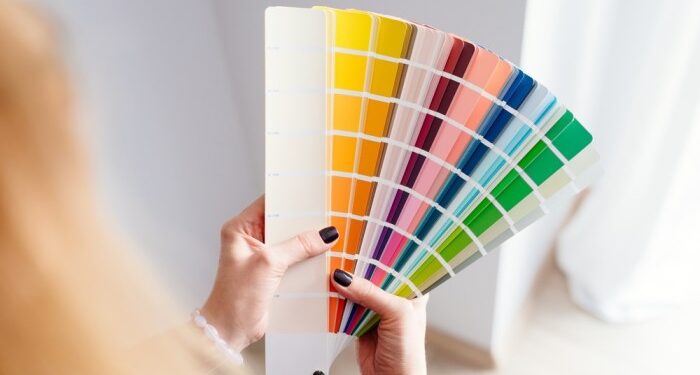Step into a world where paint color consultation services reign supreme, guiding individuals and businesses towards spaces that inspire and captivate. This insightful passage delves into the art of color consultation, shedding light on its transformative capabilities and the importance of seeking professional guidance for optimal results.
Paint color consultation services offer a unique blend of expertise and creativity, ensuring that every hue and tone chosen contributes to a harmonious and aesthetically pleasing environment.
Overview of Paint Color Consultation Services
Paint color consultation services involve expert advice and guidance provided by professionals to help individuals or businesses choose the right colors for their interior or exterior spaces. These services typically include color selection, coordination, and recommendations based on the client's preferences, style, and the specific needs of the space. It is essential to hire a professional for color consultation to ensure that the chosen colors complement each other, enhance the overall aesthetic appeal of the space, and create the desired atmosphere. Professionals have a deep understanding of color theory, trends, and the impact of colors on mood and perception, enabling them to make informed recommendations that align with the client's vision.Importance of Hiring a Professional for Color Consultation
Professional color consultation services can make a significant difference in the outcome of a painting project. Here are some reasons why hiring a professional is crucial:- Expertise: Professionals have in-depth knowledge of color theory and design principles, allowing them to create cohesive color schemes that work harmoniously.
- Personalization: Professionals take into account the client's preferences, style, and the function of the space to tailor color recommendations that suit their specific needs.
- Trends and Innovation: Professionals stay up-to-date with the latest color trends and innovative techniques, ensuring that the color scheme is contemporary and visually appealing.
- Cost-Effective: Professional color consultation can prevent costly mistakes such as choosing the wrong colors or having to repaint due to dissatisfaction, ultimately saving time and money in the long run.
Common Scenarios for Seeking Color Consultation Services
There are several situations where individuals or businesses might benefit from professional color consultation services:- Renovations or Remodeling Projects: When renovating or remodeling a space, seeking color consultation can help ensure that the new color scheme enhances the updated design and overall aesthetic.
- Selling or Staging a Property: For real estate agents or homeowners looking to sell a property, professional color consultation can help create a welcoming and attractive environment that appeals to potential buyers.
- Creative Block: When individuals feel overwhelmed or unsure about choosing colors for their space, consulting with a professional can provide clarity and inspiration to move forward with confidence.
Benefits of Paint Color Consultation
Professional color consultation can make a significant impact on the overall look and feel of a space. By working with a color expert, you can ensure that the colors chosen complement each other harmoniously and create the desired atmosphere.Enhancing Space
Color consultation services can help enhance a space by selecting the right colors that work well together and with the existing decor. This can result in a cohesive and visually appealing environment that is both welcoming and aesthetically pleasing.Achieving Desired Aesthetics
With the guidance of a color consultant, you can achieve the exact aesthetics you have in mind for your space. Whether it's a cozy and warm feel for a living room or a bright and energizing atmosphere for a workspace, color consultation can bring your vision to life.Impact on Mood and Productivity
The colors in a space can have a profound impact on the mood and productivity of those within it. For example, calming blues and greens can promote relaxation and focus, while vibrant yellows and oranges can energize and inspire creativity. A color consultation can help choose the right colors to promote the desired mood and boost productivity in any setting.Process of Paint Color Consultation
When it comes to a paint color consultation, there are specific steps that professionals follow to ensure they provide the best color recommendations for their clients' spaces. This process involves a careful assessment of the area, understanding the client's needs and preferences, and selecting suitable color schemes that enhance the overall look and feel of the space.Assessment and Analysis
During a paint color consultation, professionals start by assessing the space that needs to be painted. This typically involves looking at the size of the room, the amount of natural light it receives, the existing furniture and decor, and the overall style of the space. By understanding these factors, professionals can determine the best color options that will complement the space and achieve the desired aesthetic.- Professionals may also consider the client's personal preferences and lifestyle when selecting color schemes. For example, if a client prefers a calming and serene environment, they may recommend soft blues or greens. On the other hand, if a client wants a bold and vibrant space, they may suggest rich reds or yellows.
- Additionally, professionals may use color psychology principles to choose colors that evoke specific emotions or moods. For instance, they may recommend warm tones like reds and oranges for areas where energy and creativity are desired, while cool tones like blues and greens may be suggested for spaces meant for relaxation and tranquility.
Color Scheme Selection
Once the assessment and analysis are complete, professionals will present a selection of color schemes to the client. This may include paint swatches, digital renderings, or mood boards to help the client visualize how the colors will look in their space. During this stage, clients are encouraged to provide feedback and ask questions to ensure they are comfortable with the proposed color options.It is essential for professionals to communicate effectively with clients throughout the consultation process to ensure that the final color choices align with the client's vision and expectations.
Factors Influencing Paint Color Choices
When it comes to selecting paint colors during a consultation, there are several key factors that can influence the decision-making process. These factors range from practical considerations to personal preferences, all of which play a crucial role in determining the final color choices.Lighting Conditions
Lighting conditions have a significant impact on how paint colors appear in a space. Natural light, artificial light sources, and the direction of light can all affect the perceived color of a paint swatch. It's essential to consider these factors during a consultation to ensure that the chosen colors look their best in the intended environment.Trends, Psychology, and Personal Preferences
Paint color trends, psychological effects of colors, and individual preferences also play a vital role in color selection. Trends can influence what colors are popular at a given time, while the psychology of color can affect the mood and atmosphere of a room. Personal preferences, such as favorite colors or desired aesthetics, are unique to each client and must be taken into account during the consultation process.Importance of Color Psychology in Consultations
Color psychology plays a crucial role in paint color consultations as it involves understanding how different colors can impact emotions, moods, and behaviors. By leveraging the principles of color psychology, professionals can create spaces that evoke specific feelings and atmospheres tailored to the client's preferences and needs.Emotional Impact of Colors
- Warm colors like red, orange, and yellow are known to be stimulating and energizing, making them ideal for spaces where activity and social interaction are encouraged, such as dining rooms or kitchens.
- Cool colors like blue, green, and purple have a calming effect and are often used in bedrooms or relaxation areas to promote a sense of tranquility and peace.
- Neutral colors like white, beige, and gray are versatile and can create a sense of balance and sophistication in any room.
Utilizing Color Psychology in Design
- Professionals use color psychology to strategically choose paint colors that align with the desired mood or atmosphere of a space. For example, a spa may opt for soft blues and greens to create a serene environment, while a vibrant orange may be used in a gym to promote energy and motivation.
- Color psychology also considers cultural associations and individual preferences, ensuring that the chosen colors resonate with the client's personal style and background.
















